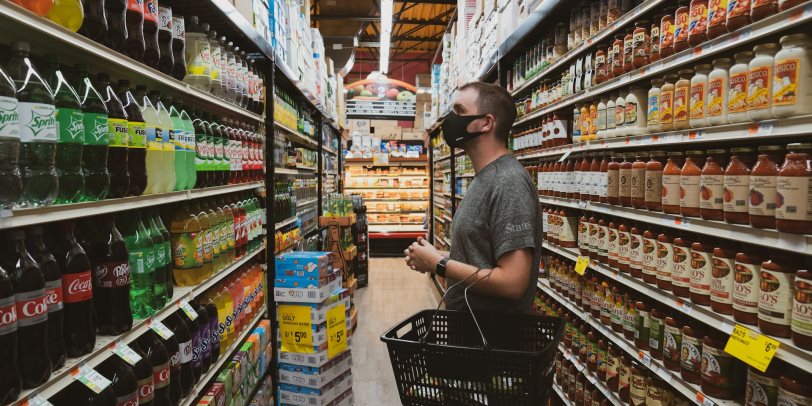Common Mistakes and COVID-19 Opportunities for Customer Touch Points
The impact of COVID-19 in the retail and hospitality sector has brought new changes and challenges for businesses to think over.

The impact of COVID-19 in the retail and hospitality sector has brought new changes and challenges for businesses to think over.
With stores closed and social distancing encouraged, people have gotten used to the convenience and availability of online ecommerce and e-grocery shopping. With vaccines on the horizon, businesses will have to reconsider how the customer journey and customer’s expectations have changed as people begin to decide whether to go out or stay home.
Omnichannel Challenges
72% of Egyptians are shopping more online since the start of the pandemic, according to a recent Mastercard study, with 57% beginning to use online banking services. It goes on to state that 54% of those surveyed ordered more groceries online, and 62% ordered more clothing online.

As people slowly begin to return to dining and shopping out, businesses must keep in mind that they are now accustomed to the convenience of having their favorite meals at home in their comfort zones. They leave the house for a change of pace, new experiences, and they want to be served.
By not taking the opportunity to improve your customer journey on each touch point, whether it is traditional or digital, you risk customers retreating back to their homes with one bad brand engagement.
Direct-to-consumer (DTC) and omnichannel strategies lets customers interact with brands in the most convenient ways for them, and are where businesses should be investing resources into. Keep in mind each channel has its own characteristics and shopper profiles.
“While COVID-19 accelerated ecommerce, there is still a huge gap in understanding online and offline interaction[s]... Shoppers don’t want to be pushed around. In many cases they explore, gather information, and see the item physically for themselves and then go home and buy it online for pretty much the same price… with no hassle of carrying” says Dahlia Zayed, Managing Director of FWD Consultancy.
Today’s customers have a wider variety of choices than ever before, with the challenge being how we can keep them engaged and connected to our brand. Customers’ behaviors and preferences change according to channel, and we must learn how to connect each touch point in a coherent and easy-to-use way.
Profiling shoppers and influencers
Identify influencers, and we don’t mean social media influencers but the people that are influencing the buyer’s decision.
“Brand owners often miss out that the user may not be the [direct] shopper hence it is key to understand the shopping decision-making cycle – not only the touch points or where they shop but who is the influencer. Say- chicken nuggets brand -the mom is the shopper yet she will only buy what her kids like even though the brand may have only communicated to the mom” says Zayed.
For sales teams on-ground, they have the advantage of communicating with people in front of them. Your teams can see and read body language and understand customers’ dynamics – who is the main shopper and who is accompanying/influencing them – to better market the value of the product accordingly.
There are similar advantages online when collecting and using data, needing only some extra time to gather and analyze, you can track your customer’s actions throughout your website and/or apps to understand their online behaviors and shopping dynamics. This provides ample data-driven opportunities to remarket through advertising.
Talking about one of her clients, the brand’s sales team were well-versed in their product’s specifications but “failed to listen to the shopper – No EQ [emotional intelligence]. They listed [specifications] but don’t build the right story”.
By understanding the different dynamics of their shoppers, Zayed and her client “identified 3 distinct shopper profiles that account[ed] for 90% of the sales, and with new training to the sales team, a 300% sales uplift happened in 18 months”.
Post-COVID-19, emotional intelligence training and data tracking will prove invaluable as many customers have become more price sensitive and cautious about their spending habits.
Strengthen brand and product visuals
Massive budgets are allocated for brand and product visual branding, but not enough thought is given towards how those visuals translate toward online interactions with customers.
Creating data-driven visual content can make the difference between a sale and an overlooked product. As with offline, your brand or product visuals affect why customers would buy from you compared to your competition’s offerings.
When it comes to ecommerce, and particularly e-grocery, because of the inability to interact with the products, imagery is a key element that influences the perception of brand quality and value. More importantly, the more you clarify specifications and expand on your product’s information, the better.
“On Ecommerce, there are new truths about the images we use for E-grocery. Research shows that the typical product shots don’t work” says Zayed, who often holds workshops pertaining to the subject, “a new ecommerce specific image needs to be produced - one amplifying the key cues of the brand bundle. This proved to yield up 15% up sales”.

Courtesy of Dahlia Zayed
Now more than ever, customers are looking for information, comfort, and support to navigate the current landscape. Make certain that your content and visuals, online and offline, provide customers with what they are looking for.
Brand perception
Essential to the customer journey is customer service, a touch point that is often underdeveloped in Egypt.
“Last but not least we are not a service-oriented country – We don’t even smile to the customer” says Zayed. “I was a key note speaker at Brand Summit in Cairo 2 years back, and the audience were mainly directors and above. I asked them how many, in the last 3 months, have visited their own store/app or called the help line? Only 6% raised their hand.”
A part of your brand’s perceived value comes from your customer service, an integral part of the customer journey, something that is often forgotten by companies.
“The customer journey, from A to Z, audited at every step of the way is key” says Zayed. Gaps in the journey such as promotions not registered properly on store systems but promoted on-site, cluttered or crowded shopping lanes, and long call center waiting times and dropped calls will have customers turning the other way.
Particularly during times of crisis, customers interactions with your touch points have an immediate and long-lasting effect on their loyalty and trust toward your brand. These touchpoints have an important role in bridging the gap between the digital and in-store shopping experience, making it even more crucial to ensure the experience is well-thought out, dynamic, and personalized when possible.




